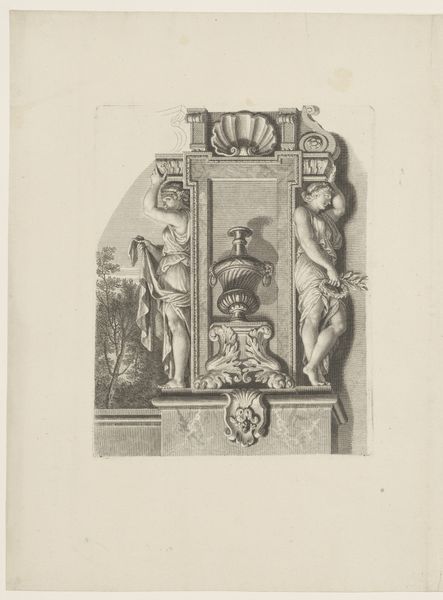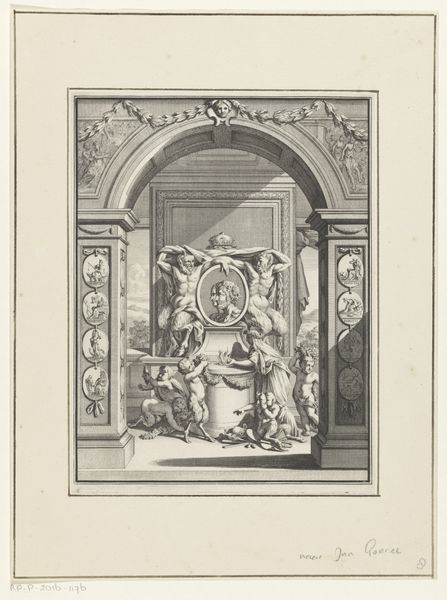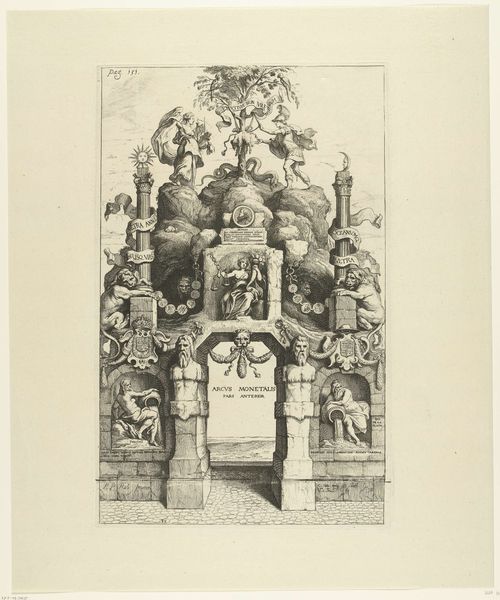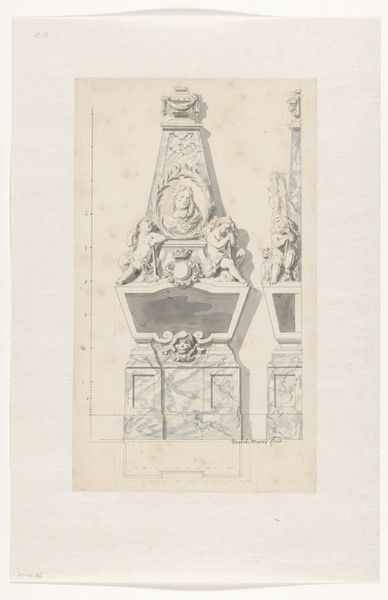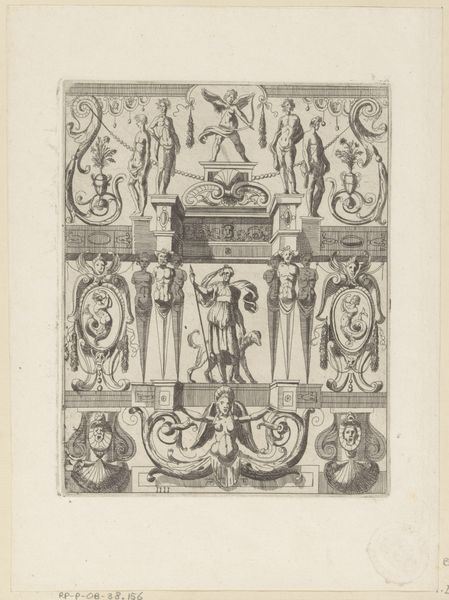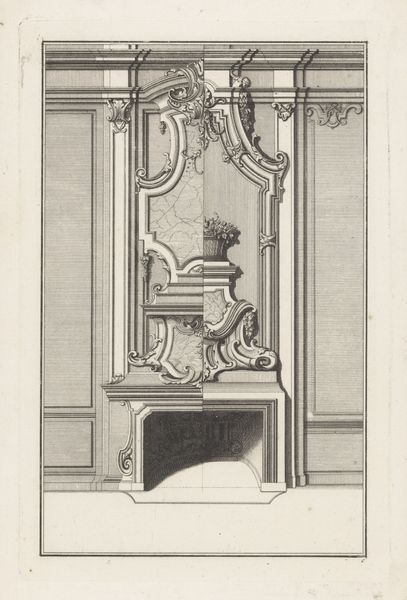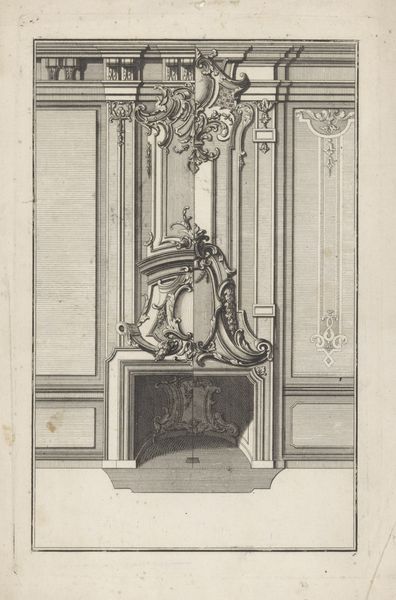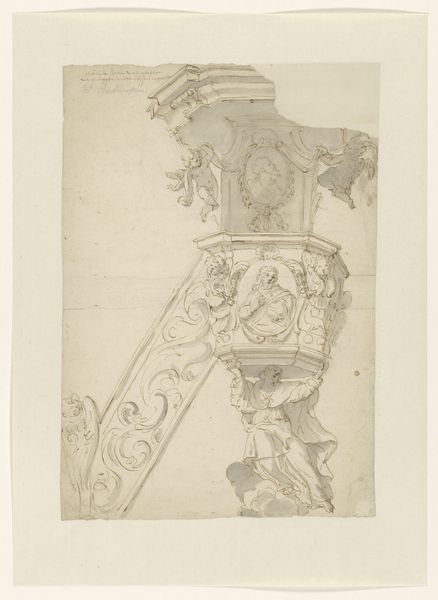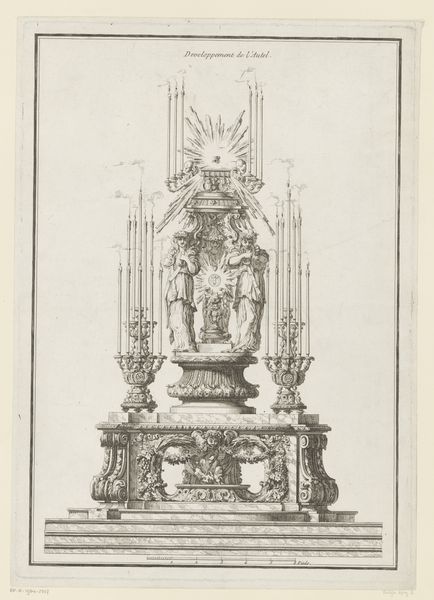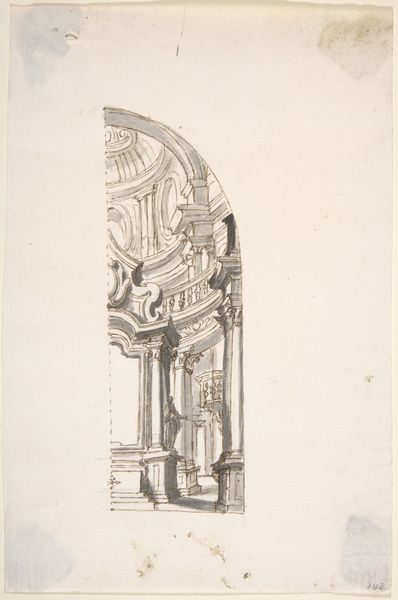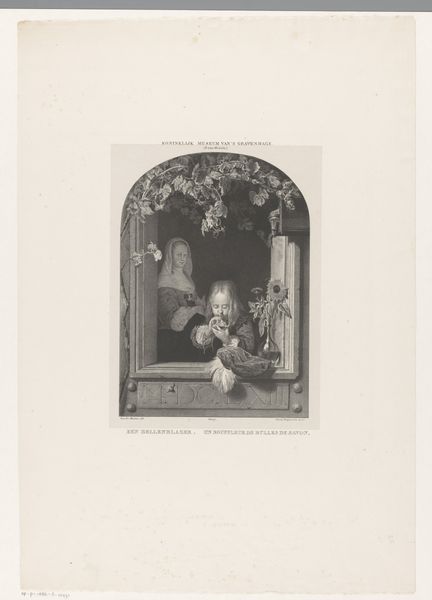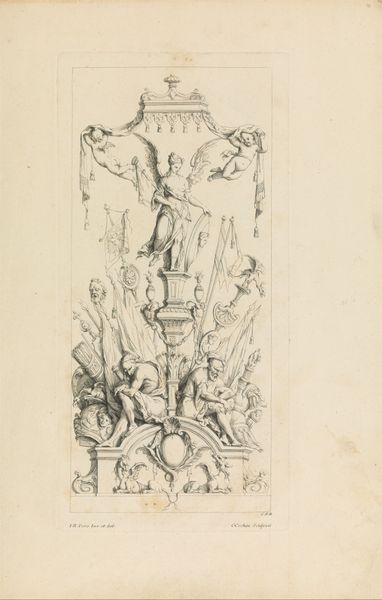
print, engraving, architecture
#
baroque
# print
#
classical-realism
#
figuration
#
history-painting
#
engraving
#
architecture
Dimensions: height 327 mm, width 248 mm
Copyright: Rijks Museum: Open Domain
Jean-Baptiste de Poilly made this print, "Twee kariatiden," probably in France in the early 18th century. It depicts two caryatids – female figures used as architectural supports – framing a decorative urn. Prints like these circulated widely at the time, serving as pattern books for artisans and builders. They reveal the visual language of power and status in the era of Louis XIV, when classical motifs were revived to glorify the monarchy. Notice how the caryatids, reminiscent of ancient Greek sculptures, lend an air of timeless authority. The ornate details and symmetrical design reflect the emphasis on order and grandeur that defined French courtly taste. Understanding this print requires considering its role within a broader system of artistic production and consumption. The image gives us a glimpse into the workshops, academies, and patronage networks that shaped the look and feel of the era. By consulting period treatises and architectural drawings, we can better understand how prints like these helped disseminate aesthetic ideals.
Comments
No comments
Be the first to comment and join the conversation on the ultimate creative platform.

